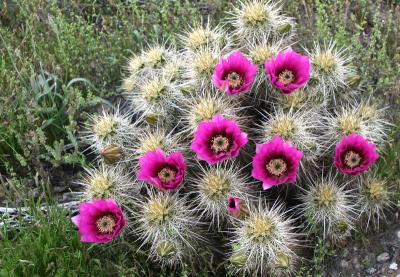
Echinocerus Englemani ( Strawberry Cactus )
Echinocereus engelmannii, commonly known as the Strawberry Cactus, is a captivating species native to the arid regions of the southwestern United States and northern Mexico. This small to medium-sized cactus typically reaches heights of 1-2 feet (30-60 cm) and features a distinctive cylindrical shape with prominent ribs adorned with numerous clusters of short, spiny areoles. The Strawberry Cactus is especially notable for its vibrant, strawberry-red flowers that bloom in the spring, creating a stunning contrast against its green, succulent stems. Thriving in well-draining soil, it prefers full sun and can tolerate high temperatures, making it well-suited for desert landscapes. This species is drought-tolerant, requiring minimal watering once established. After flowering, it produces small, edible fruits that resemble strawberries, hence its common name, and are enjoyed by both wildlife and humans. As a member of the Cactaceae family, Echinocereus engelmannii is not only appreciated for its ornamental beauty but also for its role in providing habitat and sustenance for various desert creatures.